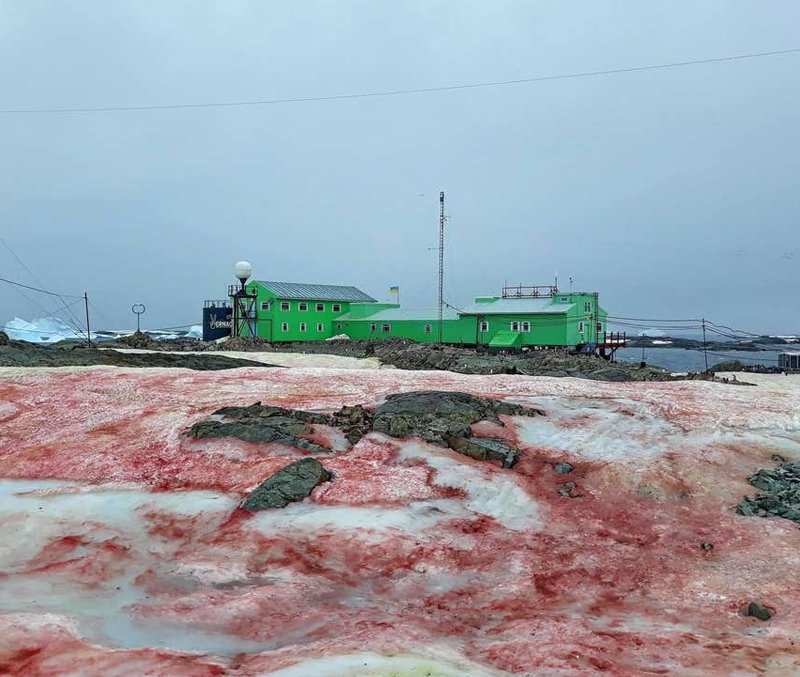
What used to be a blinding white winter wonderland – covered in snow, has now parts of it covered in blood red snow. Scientists working at the Vernadsky Research Base in Antarctica have been surrounded by what is now referred to as “pink snow” “raspberry snow” or even “blood red snow”.
This bizarre phenomenon actually has a scientific explanation:
Images released by Ukraine’s Ministry of Education and Science on Monday showed the phenomenon which soon went viral is caused by microscope snow algae when weather conditions are favourable during Antarctica’s summer months. The ministry explained that the algae is able to survive the extreme cold temperatures during the Antarctic winter and begins to sprout when warmer temperatures arrive in the summer (between October and February). The algae’s cells have a red carotene layer which protects it from ultraviolet radiation and produces red spots in the snow like “raspberry jam”, the ministry said.
But what does this mean for the environment?
Because of the red-crimson color, the snow reflects less sunlight and melts faster. As a consequence, it produces more and more bright algae.This red-pigmented algae or red snow has the potential to start the alarming cycle of warming and melting, worrying scientists about the continued impact of climate change on this critical region.

